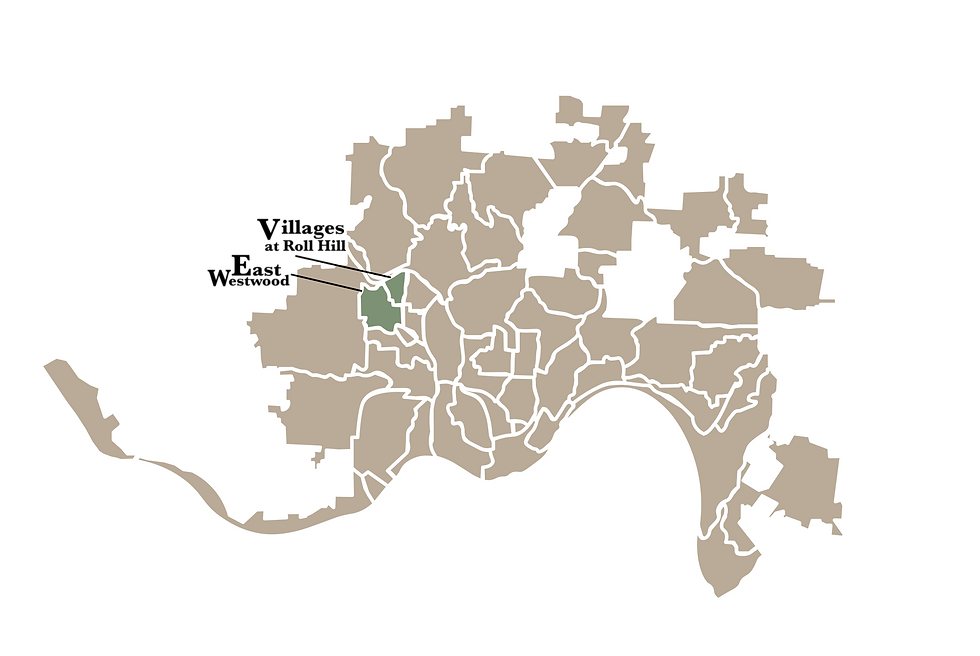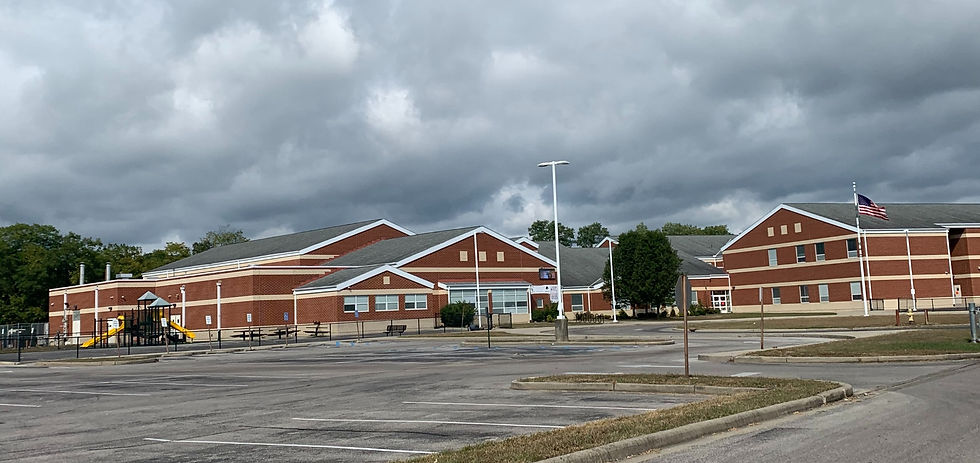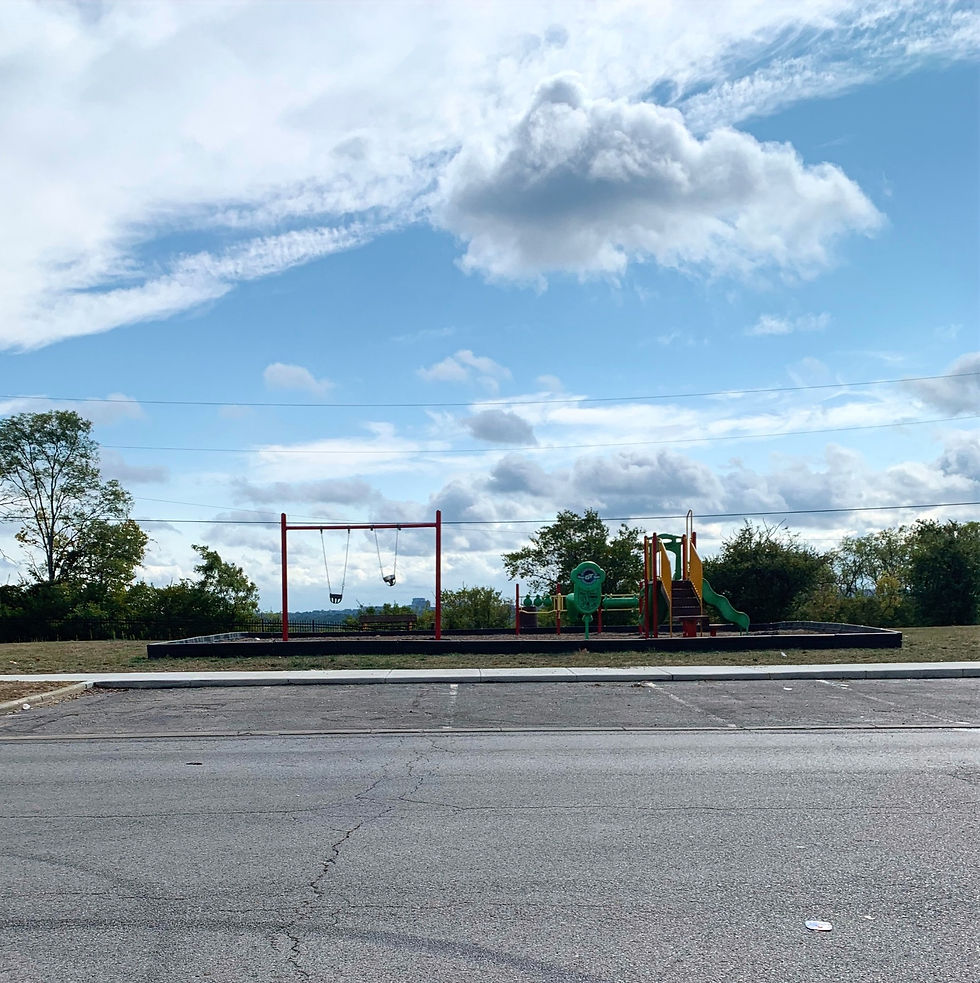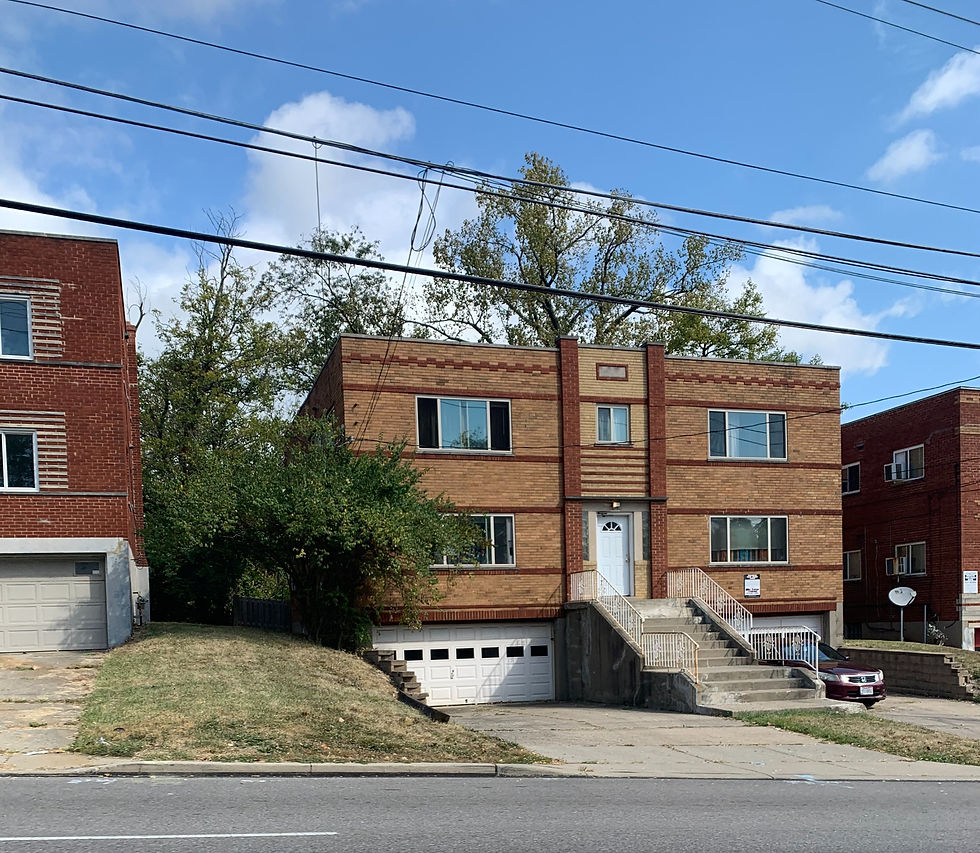East Westwood and the Villages at Roll Hill
- Anthony Gustely

- Oct 4, 2020
- 4 min read

It is not easy to confront some of the harsh realities that come with this project. As I said at the beginning of this journey, not every neighborhood in the city is a "Hyde Park". Spatial segregation is so real, and yet, so invisible if you aren't familiar with the history or layout of Cincinnati. So let's talk about it.
Let's discuss the concept of spatial segregation within Cincinnati. Most often talked about within the confines of where people live (and not where they work), spatial segregation refers to "the extent to which groups defined by racial, ethnic, or national origin live in different neighborhoods ... groups can [also] be residentially segregated on the basis of any ascribed or achieved characteristic (such as religion, family structure, or socioeconomic status) and at any level of geography (such as a residential block, a state or province, or a country region)."
Cincinnati remains spatially segregated by race as a product of redlining during the age suburbanization and automization in the early to mid 20th century. As new homes began to be built outside of city limits, banks would create maps revealing eligibility for home loans in these newly developed areas. Primarily minority communities were most often outlined in red, signaling a "high risk" lending status which was deemed ineligible for home loans. The result of redlining was spatial segregation: keeping African Americans who resided closer to downtown in their place and allowing for the "white flight" of caucasian families out to the periphery.
"Even though we can no longer legally redline, the impressions that redlining gave of which communities are desirable or not desirable still exist...Wealth is generational, so if you've robbed generation after generation of these communities of the wealth that they could have been building, those cumulative effects are still living." - UC Assistant Professor of Sociology Dr. Maliq Matthew
Visiting East Westwood and the Villages at Roll Hill was actually quite bittersweet. Bearcat Buddies, which is a volunteer program that connects UC students with Cincinnati Public Schools students, brought me to East Westwood in 2018. I was a Bearcat Buddy at Roll Hill Elementary and got to teach fourth graders reading comprehension in an interactive work environment. I loved the experience because Bearcat Buddies encourages personal connections in tandem with teaching the students. When I taught at Roll Hill, I got to learn more about the disadvantages these neighborhood residents face. Nearly 25% of neighborhood residents live in poverty (Villages at Roll Hill is one of the 10 poorest neighborhoods in the city). East Westwood and the Villages at Roll Hill are 2 of only 5 neighborhoods that don't have a neighborhood plan on the City of Cincinnati website.

Sometimes I wonder how Cincinnati even determined these neighborhood boundaries to begin with. In comparison to larger, more traditional neighborhoods like Westwood, the Villages at Roll Hill isn't so much a neighborhood as it is a singular affordable housing complex. Renovated in 2015, 88.6% of housing within the neighborhood is subsidized. The neighborhood is a collection of housing "pods" per se with multiple units next to each other in each pod. When I drove around the neighborhood, I felt intrusive (as I should have feel). It was uncomfortable and impolite to be taking pictures of people's homes without engaging with them, something planners are notoriously known for in the past.

Nonetheless, I did decide to take some pictures of the neighborhood (as I do all neighborhoods I've visited). I was pleasantly surprised at how many residents were up and about on a Sunday morning. The community was alive: residents were walking their dogs and friends were conversing outside their homes. The atmosphere was the same in East Westwood. There was a sense of camaraderie among community members, who were taking walks and socializing near the local convenience store.
Similar to Roll Hill, East Westwood has a majority renter population. In both neighborhoods, over half of the housing units are within mutli-unit structures (like the one pictured below). The condition of these structures varied from mint to dilapidated.

In all truth, there was not a whole lot to write about this week. Redlining, though it may have happened decades ago, has a ripple effect on the fate of neighborhoods. It has created stagnant inequality, where minority families have less upward economic mobility because of the lack of opportunity within their neighborhoods. The divestment within neighborhoods like East Westwood and Villages at Roll Hill transcends income: low access to healthcare, under-performing school districts, lower-quality housing, and an absence of local employment opportunities are all products of a broken system. Volunteer programs like Bearcat Buddies through the University provide a means for students to help the younger generations in these community. It helps in bridging the gap between privileged and underserved school districts, yet there is so much more work to do in fixing the system that created so many barriers for an entire population of Cincinnatians.
LEARN MORE
That Which Divides Us, CityBeat - A great informational article about economic segregation within Cincinnati and how it's historically played out on the neighborhood scale.








Comments